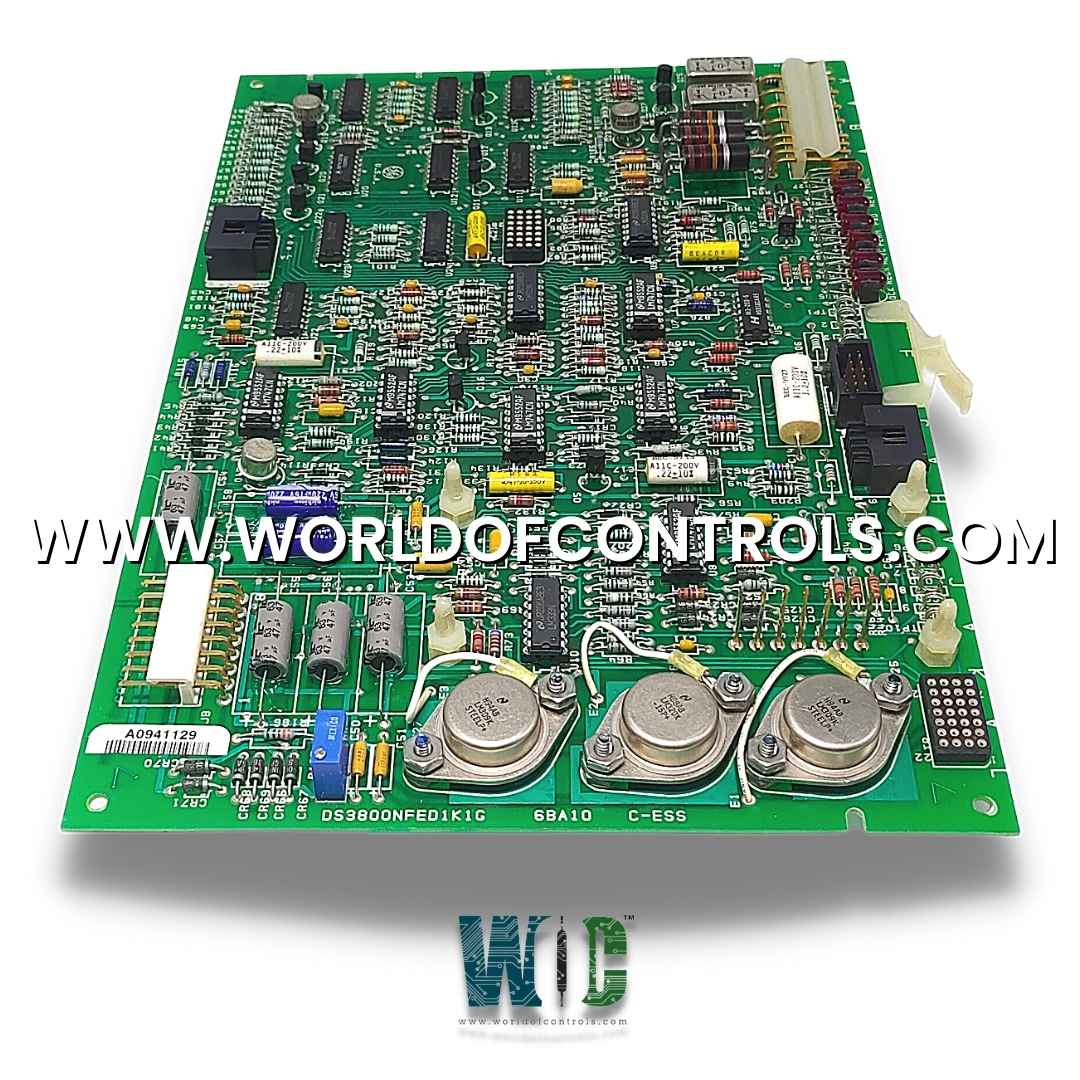
World Of Controls understands the criticality of your requirement and works towards reducing the lead time as much as possible.
DS3800NFED - Analog Interface Module is available in stock which ships the same day.
DS3800NFED - Analog Interface Module comes in UNUSED as well as REBUILT condition.
To avail our best deals for DS3800NFED - Analog Interface Module, contact us and we will get back to you within 24 hours.
SPECIFICATIONS:
Part Number: DS3800NFED
Manufacturer: General Electric
Series: Mark IV
Product Type: Analog Interface Module
Number of channels: 12
Operating temperature: -30 to 65 degrees Celsius
Size: 8.25 cm high x 4.18 cm
Repair: 3-7 Day
Availability: In Stock
Weight: 2 lbs
Country of Origin: United States
FUNCTIONAL DESCRIPTION:
DS3800NFED is an Analog Interface Module manufactured and designed by General Electric as part of the Mark IV Series used in GE Speedtronic Gas Turbine Control Systems. An Analog Interface Module (AIM) is a device used to bridge the gap between digital systems and analog sensors or actuators. It allows digital control systems to interface with analog signals by converting analog inputs into digital data that can be processed by a computer or controller. The AIM typically consists of analog-to-digital converters (ADCs) for converting analog signals into digital values and digital-to-analog converters (DACs) for converting digital signals into analog voltages or currents. These converters are designed to accurately sample and convert analog signals with appropriate resolution and precision.
FEATURES:
Analog Interface Modules (AIMs) typically offer a range of features to facilitate the integration of analog signals with digital control systems. While the specific features may vary depending on the manufacturer and model, here are some common features you may find in an AIM:
Analog-to-Digital Conversion: AIMs include analog-to-digital converters (ADCs) that can sample and convert analog signals into digital data. The ADCs may support different sampling rates, resolutions, and input voltage or current ranges to accommodate various types of analog signals.
Digital-to-Analog Conversion: AIMs also incorporate digital-to-analog converters (DACs) to convert digital signals from the control system into analog voltages or currents. The DACs may offer different output voltage or current ranges and resolution levels.
Signal Conditioning: AIMs often provide signal conditioning circuitry to optimize the quality and accuracy of analog signal measurements or control. Signal conditioning may involve amplification, filtering (low-pass, high-pass, or band-pass), isolation, or linearization techniques to address noise, signal level adjustments, frequency response, or calibration requirements.
Input/Output Ranges: AIMs typically support a range of input and output voltage or current ranges to accommodate different sensor or actuator specifications. Common voltage ranges include -10V to +10V, 0V to +10V, or 0-20mA, but they can vary depending on the AIM model.
Communication Interfaces: AIMs often feature various communication interfaces for connecting to the digital control system or computer. Common interfaces include USB, Ethernet, RS-232, RS-485, or fieldbus protocols like Modbus or Profibus. These interfaces enable data transfer and control commands between the AIM and the control system.
WOC maintains the largest inventory of Replacement parts for GE Speedtronic control systems. Additionally, we offer warranty-backed unused and rebuilt boards as well as board repairs for your damaged ones. For your OEM needs, our team of professionals is available around-the-clock. We at WOC are happy to help you with any needs you may have in terms of automation. Please contact our team by phone or email for pricing and availability on any components and repairs.
What is the purpose of an Analog Interface Module (AIM)?
An AIM is used to bridge the gap between digital control systems and analog sensors or actuators. It allows the digital system to interface with analog signals by converting analog inputs into digital data and digital outputs into analog voltages or currents.
How does an AIM convert analog signals to digital data?
AIMs use analog-to-digital converters (ADCs) to sample and convert analog signals into digital data. The ADCs measure the voltage or current of the analog signal at regular intervals and assign a corresponding digital value.
What software support is available for AIMs?
AIMs are usually accompanied by software libraries, drivers, or APIs that facilitate integration with control system software. These tools provide functions for configuration, data acquisition, output control, and monitoring of the AIM.